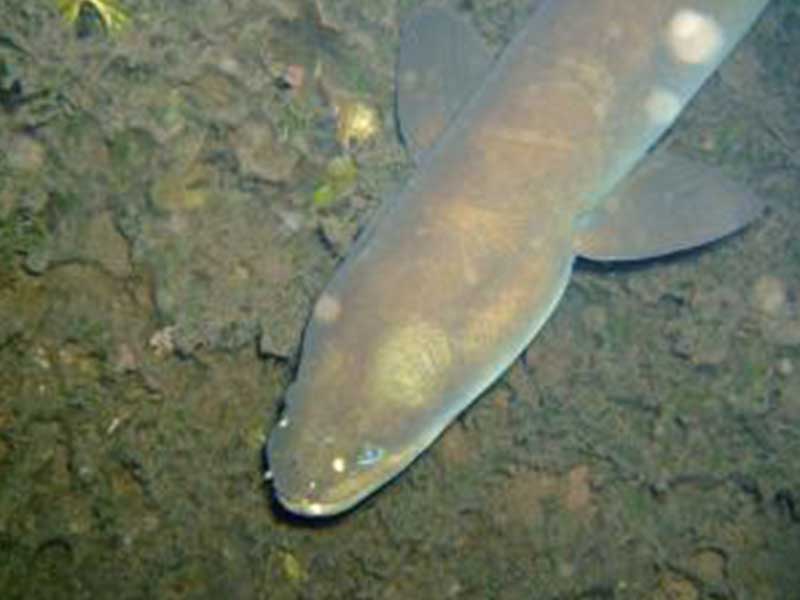Our Responsibilities
Marico Biosphere Reserve has a great responsibility towards the quality and quantity of water in South Africa
The Marico Biosphere Reserve is in the very unique position of being at the intersection of three primary drainage regions. These primary drainage regions are:
- Region A -Limpopo River basin,
- Region C – Vaal River basin
- Region D – Orange River basin (below the Gariep Dam) through the Molopo River
The key implication for the water management plan for the Marico Biosphere Reserve is that the location of the Marico BR overlaps with sources or headwaters of some of the rivers in these catchments. All these rivers, therefore, drain away from the Biosphere Reserve and not into it. The Marico BR is therefore not materially affected by surface water activities outside the boundary of the Biosphere Reserve.
Another key implication of the location of the Marico BR is that it plays a key role in providing water ecosystem services for large areas of South Africa, which are downstream from the Biosphere Reserve. River headwaters are key areas for downstream water quality and functioning, and therefore need to be carefully managed.
Karst aquifers occur in the Marico BR. These karst aquifers underlie all three biosphere zones and extend under almost all of the south and west of the Biosphere Reserve.
There is a scarcity of Karst type aquifers in South Africa.
Based on this crucial aspect, the Marico BR has extensive responsibility in maintaining the water qualities of a large portion of South Africa and is one of the core reasons for the registration of this region as a Biosphere Reserve with UNESCO.
In addition to this crucial aspect Marico BR also takes on and adopts the additional responsibilities as outlined in the MaB programme.
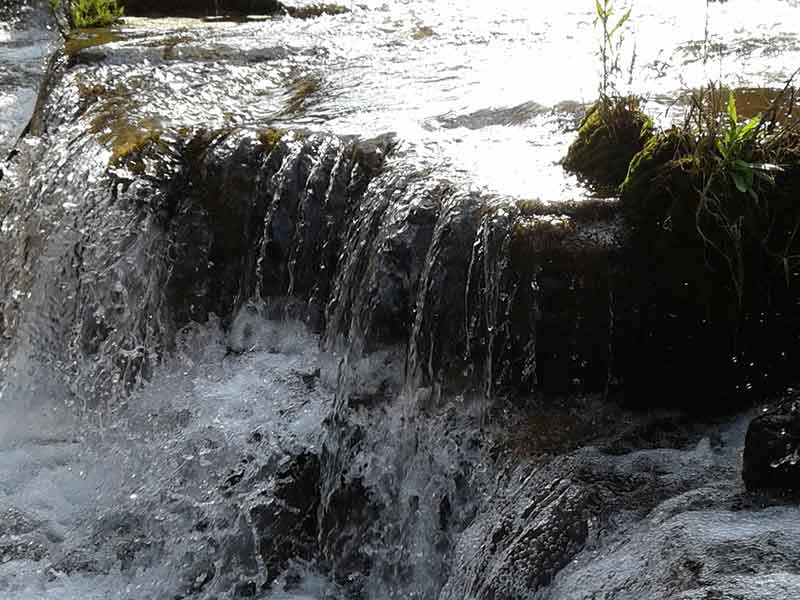
Strategic Building Blocks
A set of strategic building blocks and outcomes are identified in the Management Plan according to the two overarching themes in the Vision. The strategic building blocks identified under the Healthy Environment theme are:
- The integrity of the dolomitic aquifers and its water is safeguarded for generations to come.
- Biodiversity and the other ecosystem services in the area are also protected, restored and enhanced.
- Natural resources are utilised in a sustainable way.
- The clean air and the low light pollution at night are preserved.
- The historical capital is preserved owing to its contribution of value to the region through a vibrant tourism route.
- Coherent actions to address climate change to form part of the local way of living.
- Economic conditions are beneficial to improving livelihoods in the area.
A number of external stresses from the surrounding areas have been identified that pose a risk to the Marico Biosphere Reserve’s water systems. These include invasive alien plants, surface and groundwater pollution, devastating veld fires and water extraction.
The strategic building blocks identified under the Happy People: Quality of Life and Community theme are:
- The intellectual and human potential, as well as the sustainability knowledge base of the region, are optimised.
- The social capital of the area contributes to vision attainment by vigorous communities that foster a mindset of living in harmony with the environment.
- Education and capacity building promote sustainable development.
- Living standards are acceptable in terms of food security and safety.
- Basic services and public goods are functioning appropriately while overall regional sustainability increases over time.
- Job creation is contributing towards bettering the lives of the people in the area as well as enhancing environmental services.
The three Strategic Objectives identified in the Marico BR Management Plan align with the three functions for biosphere reserves of conservation, sustainable development, and logistical support as identified by UNESCO. They are as follows:
- The proposed Marico BR contributes to the conservation of landscapes, ecosystems, species and genetic variation (biodiversity) in the proposed Marico BR Catchments in order to protect the environmental capital of the area.
- The proposed Marico BR fosters economic and human development, which is socio-culturally and ecologically sustainable.
- The proposed Marico BR provides support for research, citizen science, monitoring, education and information exchange related to local, national and global issues of conservation and development.
Key Ecosystem Services
Key ecosystem services in the Marico Biosphere Reserve area are:
Soil formation
As much of the area is used for agriculture (commercial or subsistence), soil and the health thereof is thus central to the survival of the people in the area. Soil formation also underlies most of the other ecosystem services and is therefore key to the functioning of the area and all ecosystems.
Primary production
Much of the land in the Marico Biosphere Reserve area is used for grazing. Thus the primary production of vegetation, especially in the Grassland bio-regions, plays a significant role in the economic functioning of the area. Primary production also supports other vital ecosystem functions.
Nutrient cycling
Nutrient cycling, along with soil formation, are some of the most important ecosystem services that determine the land capability of an area. If the soil is degraded and the natural nutrient cycle is not functioning, the capability of an area will decrease, having not only environmental but also socio-economic impacts.
Water cycling
As the area is key to water production, the cycling of water within the system is one of the most important ecosystem services in the area.
Erosion regulation
The importance of the soils of the area in term of agriculture, makes the prevention of soil erosion and the conservation of soil a crucial ecosystem service. Furthermore, increased soil erosion can negatively impact the water quality, thus impact not only on the Marico Biosphere Reserve area, but also on the areas and the people living downstream of the area.
Water purification
Large wetlands are associated with all the dolomitic eyes of the Malmani karst system (BSP, 2015). These are nationally unique ecosystems that provide an immeasurable ecosystem service (BSp, 2015). Apart from being massive carbon sinks, these wetland systems filter, clean and regulate the flow of fresh water from the dolomitic eyes (BSP, 2015). These wetlands have significant ecosystem service value and make a disproportionately large contribution to human well-being in the province (BSP, 2015). The numerous wetlands, surrounding the dolomitic eyes and along the rivers/streams, deliver a vital ecosystem service through the purification of water. The impact of water purified in the area of the Biosphere Reserve area is enormous, as the water surfacing in and flowing through this area impacts the water quality downstream as far as Mozambique and Namibia. The Marico and Molopo rivers in themselves support numerous communities and economic sectors in their catchment areas.
Fresh water
As the Biosphere Reserve area includes not only a part of the Malmani Karst system but the eyes of the Groot-Marico, Klein-Marico, Molopo and Elands rivers as well, it forms part of one of the single most important ecosystem service areas in the North West Province. The Malmani Karst system is responsible for regulating and maintaining the fresh water resources for a significant proportion of the province’s population (BSP, 2015). The Biosphere Reserve area is considered as being semi-arid and therefore relies heavily on underground water reserves, or karst aquifers. Although the bulk of households in the more urban areas have been provided with water services sourced from the river systems, many of the rural communities are still dependent on sourcing fresh water from non-piped sources. The water from these dolomitic eyes also supply water to other countries, i.e. Botswana through the ‘Tswasa Agreement’ (DWAF, 1998) through the river systems. Locally, the water derived from these features for agriculture and domestic use is important. This karst landscape should be regarded as a Strategic Water Source Area and be managed accordingly as it is the recharge area for the network of eyes which are critically important to ecological infrastructure within the area and the North West province.
Wood
Many of the communities in the Biosphere Reserve area rely heavily on the natural vegetation for the provision of wood for fuel.
Stone and Sand
In many communities in the area, sand and stone is used for the construction of infrastructure. In the upper reaches of the Groot-Marico River, slate is very often used for the construction of homes and other infrastructure (e.g. kraals). The export of slate is one of the main economic contributors in the upper reaches of the Groot-Marico River. Mining of slate can, however, damage surface water channels and wetlands, so it is therefore not recommended, but rather a great concern.
Biochemical and pharmaceutical products
Target species of plants and animals are harvested for food and for their medicinal properties. An ever-increasing population, coupled with health challenges such as HIV/AIDS, has led to increased demand for medicinal plants in particular. Commercialisation of the medicinal plant trade via the development of ‘muthi’ markets has led to a decrease in the traditional methods of harvesting species, which were designed to protect populations of species being harvested. Specific endemic bulbs that are harvested for their medicinal value includes: Crinum bulbispermum and C. macowanii, and succulents such as Lithops leslei subsp. Leslei.
Genetic Resources
The dolomitic eyes (springs) are associated with dolomitic rock underlying the area. These dolomitic eyes, which are still in a relatively natural state (BSP, 2015), is often associated with unique bio-diversity. The geographic isolation of the dolomitic eyes results in high levels of speciation and thus results in high endemism of both invertebrates and fish species.
Diversification of fish and other aquatic organisms is likely to be a phenomenon common to all the upper catchments of rivers in the area. Therefore, the local and international importance of these unique ecosystems and landscape features cannot be underestimated.
Due to the clean, free-flowing nature of the Groot-Marico River and the presence of the Vulnerable Marico Barb (Enteromius motebensis) and the Near Threatened Barbus sp. ‘Waterberg’ the conservation of the upper reaches and tributaries of the Groot-Marico River is of great importance. The upper Groot Marico River and tributaries are also important for species evolutionary processes as the different catchments support three genetically distinct populations of the Vulnerable Marico Barb (Enteromius motebensis) (Roux, 2015b).
Furthermore, all the river systems in the area are important as they represent a representative sample of the diversity of freshwater ecosystem types in the North West Province that should remain in a good ecological state. In the Marico River catchment these include the Rietspruit-, Bokkraal-, Ribbokfontein- and Kaaloog- se- Loop and the upper reaches of the Groot Marico River.
The Highveld Salt Pans are also important habitats for saline pan specialists. The occurrence of two saline pan specialist grasses, Cynodon polevansii and Sporobolus oxyphyllus, highlights the possibility that similar saline pan specialists may be discovered in the area.
Thus, the Marico Biosphere Reserve area is important in the preservation and conservation of unique genetic resources.
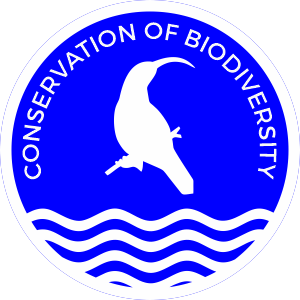
CONSERVATION OF BIODIVERSITY
Biodiversity describes the variety of life in an area, including the number of different species, the genetic wealth within each species, the interrelationships between them, and the natural areas where they occur.
An immensely rich species diversity is found in South Africa. With a land surface area of 1,1 million km2 – representing just 1% of the earth’s total land surface – South Africa contains almost 10% of the world’s total known bird, fish and plant species, and over 6% of the world’s mammal and reptile species. This natural wealth is threatened by growing human populations and their demands on the environment.
Read more
Immensely rich species diversity is found in South Africa. With a land surface area of 1,1 million km2 – representing just 1% of the earth’s total land surface – South Africa contains almost 10% of the world’s total known bird, fish and plant species, and over 6% of the world’s mammal and reptile species. This natural wealth is threatened by growing human populations and their demands on the environment.
Unfortunately, this immense natural wealth is under extreme pressure resulting from human demands placed on the environment through economic development, agriculture and urbanisation. Invasive alien vegetation and the trade in wildlife also contribute to the problem.
BIODIVERSITY & CLIMATE CHANGE
The Man and the Biosphere (MAB) Programme and the World Network of Biosphere Reserves (WNBR) apply an integrated approach in addressing bio-diversity and climate change challenges.
They rely on interdisciplinary mechanisms combining science, culture and education, to:
- find solutions for reducing the current rate of biodiversity loss for the benefits of both the environment and human populations around the globe and
- support the implementation of relevant provisions under the main multilateral environmental agreements dealing with biodiversity, including the Convention on Biological Diversity.
The MAB Programme and WNBR are also committed to realizing the main objectives of the UNESCO Strategy for Action on Climate Change to:
- build and maintain the climate change knowledge base through science, assessment, monitoring and early warning, and
- promote mitigation and adaptation to climate change, through enhanced education and public awareness.
BIODIVERSITY AS AN ECONOMIC STRATEGY
Conservation is not only a key issue in the South African environmental arena, but the use of biological resources has been identified as a key economic strategy of millions of rural dwellers in South Africa.
In the 20th century, environmental concerns have indeed come to the fore and several conferences, treaties and agreements have been concluded. Among these is the United Nation’s Convention on Biological Diversity (CBD), an international treaty that focussed on the conservation of biodiversity and to which South Africa is a signatory.
The three key objectives of the Convention are the conservation of biodiversity, the sustainable use of biological resources, and the fair and equitable sharing of benefits arising from the use of genetic resources.
CONSERVATION IN SOUTH AFRICA TODAY
Biodiversity conservation in South Africa was initially regarded as synonymous with nature conservation. While a key outcome of this approach was the establishment of an impressive network of national parks, recent efforts are broadening biodiversity conservation to incorporate developmental concerns.
These efforts are an outcome of significant policy and institutional shifts initiated with the inception of the government of today. Noteworthy among these was the consultative process that resulted in the establishment of a comprehensive policy on biodiversity conservation in South Africa.
This policy incorporated the following key principles in line with the objectives of the Convention of Biological Diversity.
The commitment to an integrated approach to the environment, essentially encapsulated in the term ‘sustainable development, has since been demonstrated in several initiatives explicitly linking economic and social development objectives with biodiversity conservation.
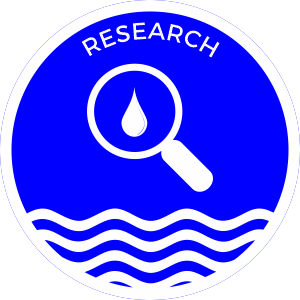
Research in Biosphere Reserves
Launched in 1971, UNESCO’s Man and the Biosphere Programme (MAB) is an Intergovernmental Scientific Programme that aims to establish a scientific basis for the improvement of relationships between people and their environments.
Read more
MAB combines the natural and social sciences, economics and education to improve human livelihoods and the equitable sharing of benefits, and to safeguard natural and managed ecosystems, thus promoting innovative approaches to economic development that are socially and culturally appropriate, and environmentally sustainable.
An integral part of this process is conducting suitable research that can contribute towards and benefit the following objectives:
- identify and assess the changes in the biosphere reserve resulting from human and natural activities and the effects of these changes on humans and the environment, in particular in the context of climate change;
- study and compare the dynamic interrelationships between natural/near-natural ecosystems and socio-economic processes, in particular in the context of the accelerated loss of biological and cultural diversity with unexpected consequences that impact the ability of ecosystems to continue to provide services critical for human well-being;
- ensure basic human welfare and a liveable environment in the context of rapid urbanization and energy consumption as drivers of environmental change.

Education for Sustainable Development (ESD)
Education is one of the leading priorities in the country and specifically the need for education towards our environment and the ability to live sustainably is of primary importance.
Due to the growth of the importance of living sustainably, this aspect was previously known and referred to as Environmental Education, however, many Biosphere Reserves the world over have adopted the term “Education for Sustainable Development” instead as they have aligned to the importance of broad based sustainable living as opposed to in depth environmental knowledge.
Read more
Sustainability Education is often referred to as Education for Sustainable Development (ESD), which has been defined as: “Education for Sustainable Development allows every human being to acquire the knowledge, skills, attitudes, and values necessary to shape a sustainable future.” (UNESCO, 2014.)
ESD empowers learners to make informed decisions and responsible actions for environmental integrity, economic viability and a just society, for present and future generations, while respecting cultural diversity. It is about lifelong learning and is an integral part of quality education. ESD is holistic and transformational education that addresses learning content and outcomes, pedagogy, and the learning environment. It achieves its purpose by transforming society.
Aspects covered within the concept of ESD within a biosphere reserve can include:
- climate change,
- bio-diversity,
- disaster risk reduction (DRR),
- and sustainable consumption and production (SCP)
In addition to the concepts covered, the Designing of teaching and learning in an interactive, learner-centered way that enables exploratory, action-oriented and transformative learning is given priority. Rethinking learning environments.
ESD is intended to lead towards Societal transformation through Empowering learners of any age, in any education setting, to transform themselves and the society they live in through enabling a transition to greener economies and societies as well as equipping learners with skills for ‘green jobs’ and lastly, motivating people to adopt sustainable lifestyles.
In addition, the following learning outcomes are focused on in the process of ESD – stimulating learning and promoting core competencies, such as critical and systemic thinking, collaborative decision-making, and taking responsibility for the present and future generations
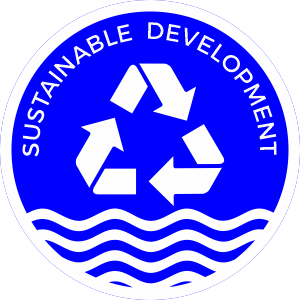
Sustainable Development
Sustainable development is the organizing principle for meeting human development goals while simultaneously sustaining the ability of natural systems to provide the natural resources and ecosystem services upon which the economy and society depend. The desired result is a state of society where living conditions and resource use continue to meet human needs without undermining the integrity and stability of the natural system.
Read more
The field of sustainable development can be conceptually broken into three constituent parts: environmental sustainability, economic sustainability and sociopolitical sustainability.
Sustainable development does not focus solely on environmental issues.
In 1987, the United Nations released the Brundtland Report, which defines sustainable development as ‘development which meets the needs of the present without compromising the ability of future generations to meet their own needs.’
The United Nations 2005 World Summit Outcome Document refers to the “interdependent and mutually reinforcing pillars” of sustainable development as economic development, social development, and environmental protection.
Indigenous peoples have argued, through various international forums such as the United Nations Permanent Forum on Indigenous Issues and the Convention on Biological Diversity, that there are four pillars of sustainable development, the fourth being cultural. The Universal Declaration on Cultural Diversity (UNESCO, 2001) further elaborates the concept by stating that “…cultural diversity is as necessary for humankind as biodiversity is for nature”; it becomes “one of the roots of development understood not simply in terms of economic growth, but also as a means to achieve a more satisfactory intellectual, emotional, moral and spiritual existence”. In this vision, cultural diversity is the fourth policy area of sustainable development.
Economic Sustainability
Agenda 21 clearly identified information, integration, and participation as key building blocks to help countries achieve development that recognises these interdependent pillars. It emphasises that in sustainable development everyone is a user and provider of information. It stresses the need to change from old sector-centered ways of doing business to new approaches that involve cross-sectoral coordination and the integration of environmental and social concerns into all development processes. Furthermore, Agenda 21 emphasises that broad public participation in decision-making is a fundamental prerequisite for achieving sustainable development.
Sustainable development does not focus solely on environmental issues.
Environmental sustainability
Water is an important natural resource that covers 71% of the Earth’s surface. As a protector of the dolomitic aquifers in the region, this makes the presence of a Biosphere Reserve in the Marico area a crucial contributing factor to the water health of a large portion of the country.
Environmental sustainability is the process of making sure current processes of interaction with the environment are pursued with the idea of keeping the environment as pristine as naturally possible based on ideal-seeking behaviour.
An “unsustainable situation” occurs when natural capital (the sum total of nature’s resources) is used up faster than it can be replenished. Sustainability requires that human activity only uses nature’s resources at a rate at which they can be replenished naturally. Inherently the concept of sustainable development is intertwined with the concept of carrying capacity. Theoretically, the long-term result of environmental degradation is the inability to sustain human life. Such degradation on a global scale could imply extinction for humanity.

